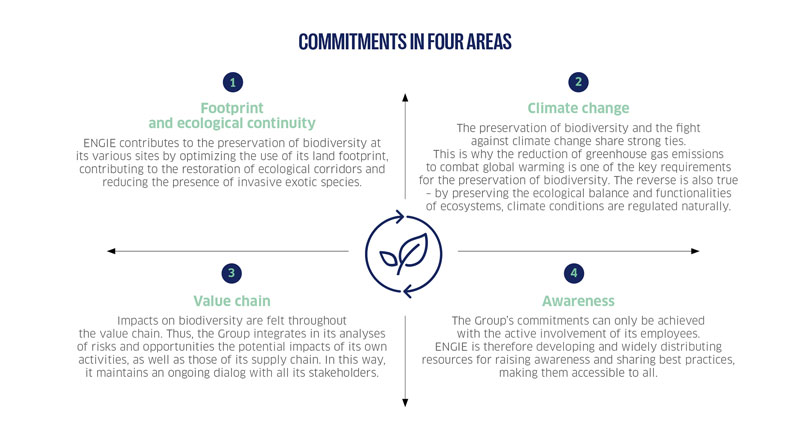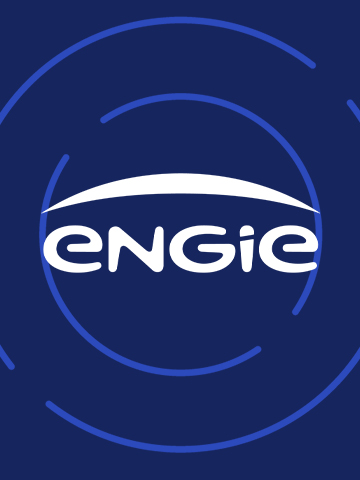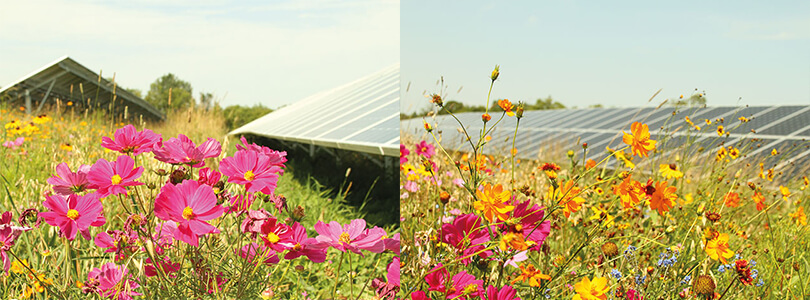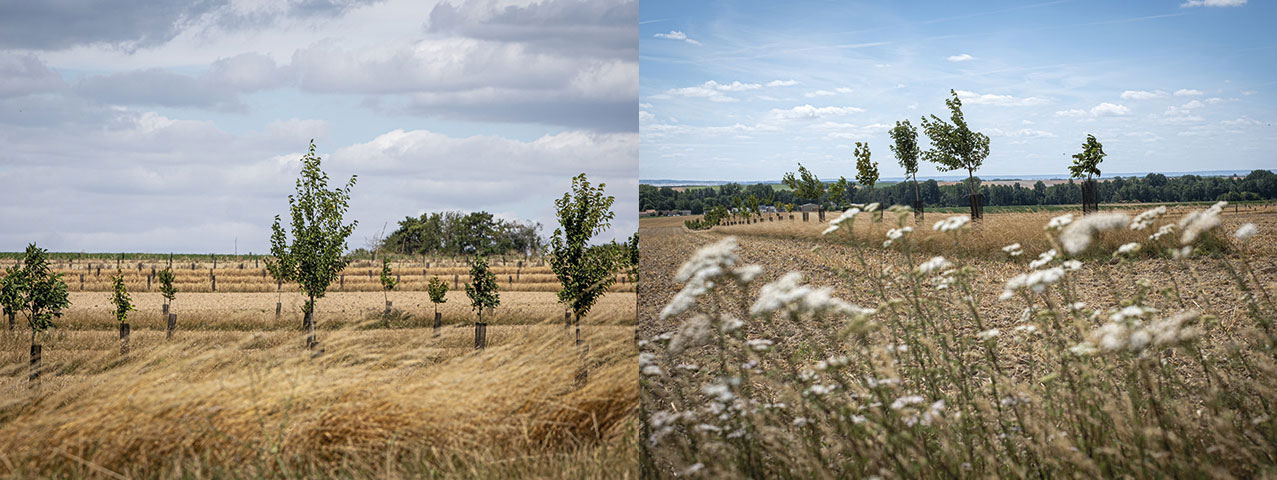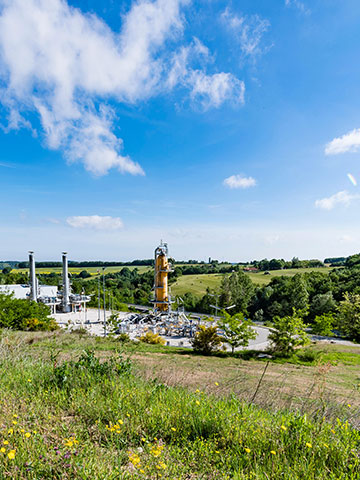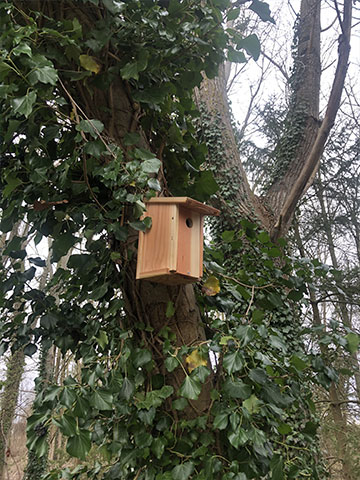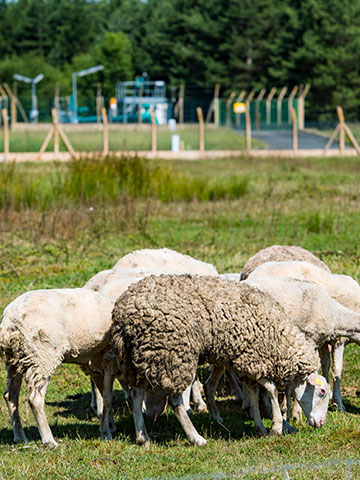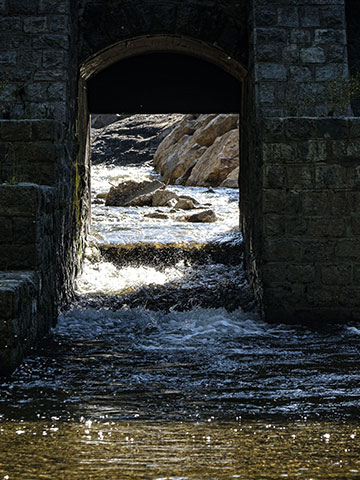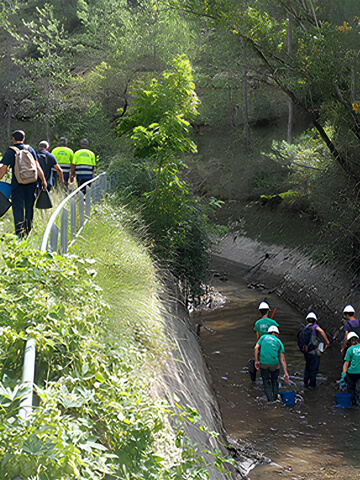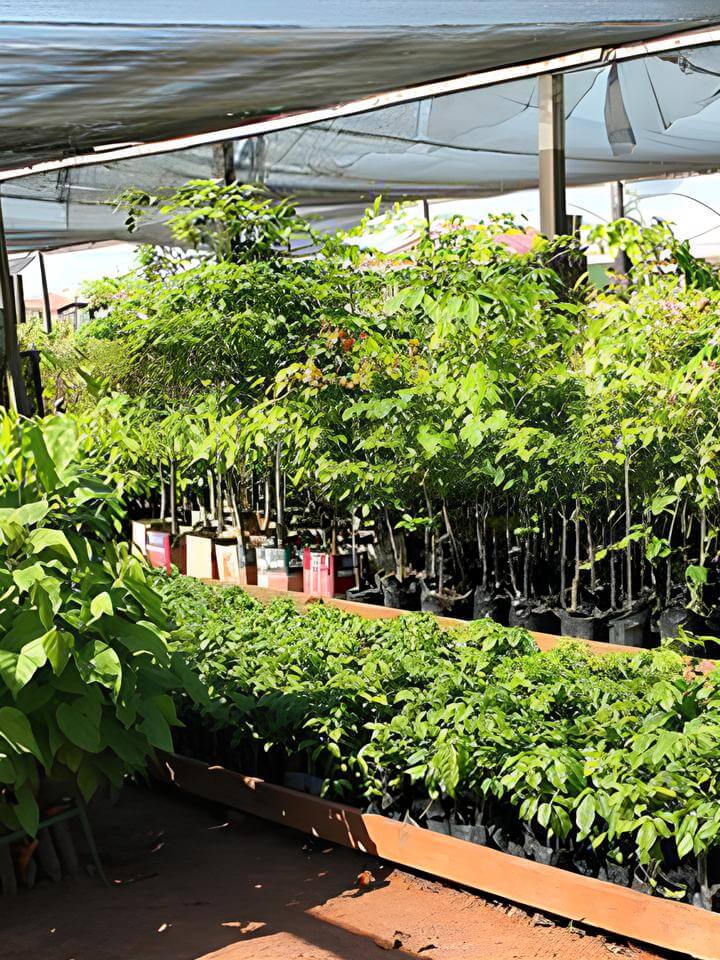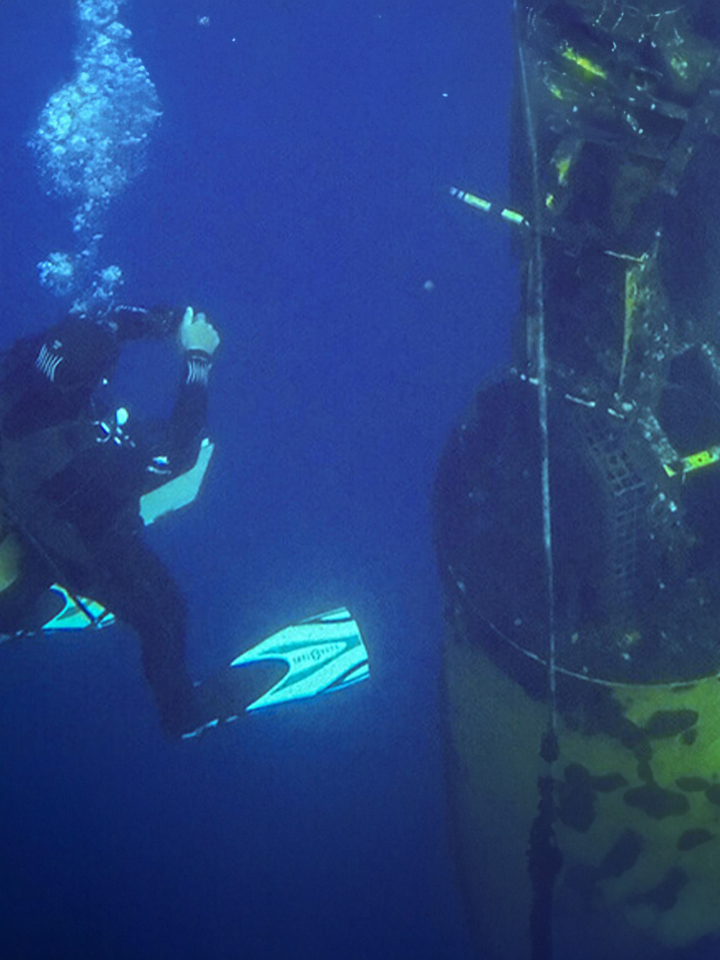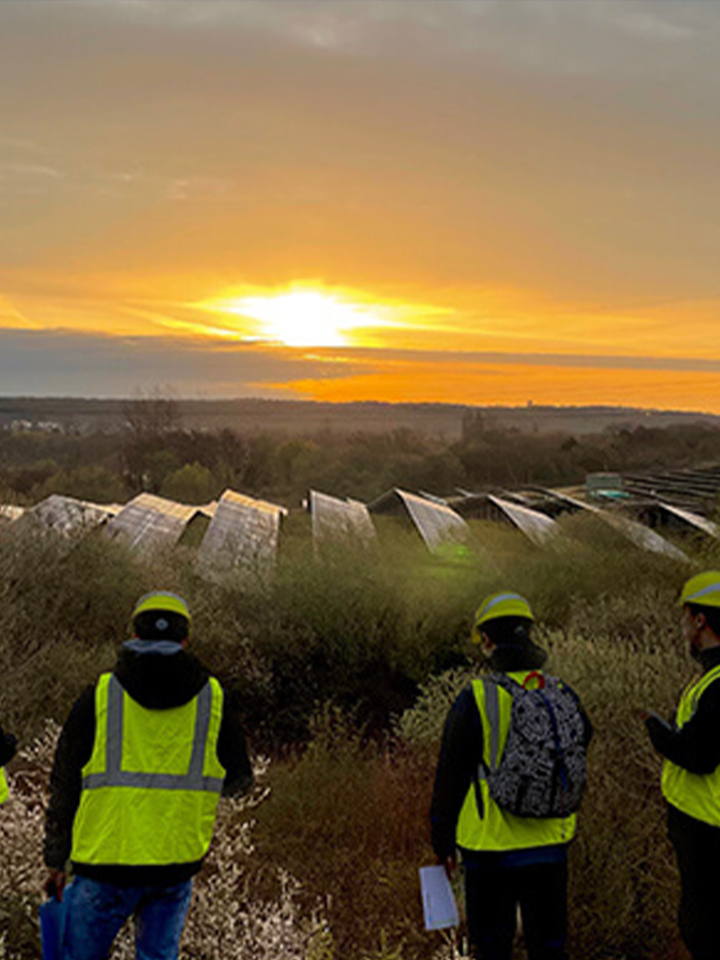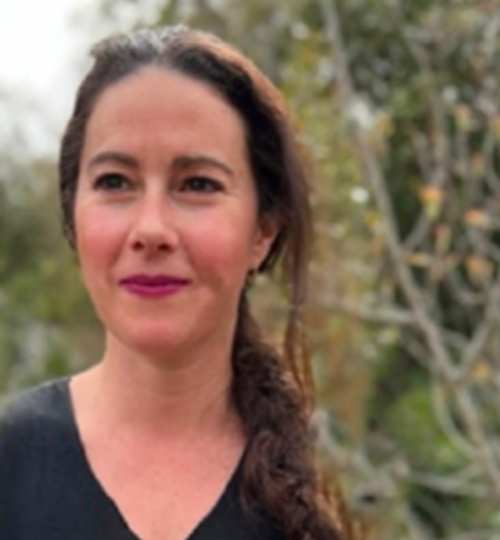Other actions :
- Programs to restore flora and protect fauna and ichthyofauna along the banks of dams in Brazil
- Limiting the impact of water intakes or discharges into the sea by thermal power plants
- Reduction or complete stoppage of wind power generation during bird migration periods
- Remediation of brownfield sites
- The introduction of ultrasound techniques to prevent fish being caught in the cooling water inlet filters of conventional power generating plants
Axis 2 – Climate change
The preservation of biodiversity and the fight against climate change are two profoundly linked issues. Since the appearance of the first forms of life, biodiversity and climate have interacted constantly.
Reducing greenhouse gas emissions to combat global warming is not only compatible with the preservation of biodiversity, it is also one of the conditions for its success. The reverse is also true: by preserving the ecosystem balances of a territory and by preserving the ecological functionalities of a habitat, the climatic conditions are also naturally regulated.
>> Learn more about ENGIE's commitments to the Climate <<
Nature-based Solutions rely on ecosystems to address societal and environmental challenges. They play an essential role in climate change adaptation and biodiversity preservation.
To act simultaneously on the challenges of climate change and biodiversity, ENGIE is committed to implementing identified projects that comply with the Nature-based Solutions standard defined by the IUCN.
The Nature-based Solutions presented below were validated by the IUCN.
>> Learn more about Nature-based Solutions <<
| Our objectives | 2024 progress report |
- 2022: 10 projects identified that comply with the IUCN Standard for Nature-based Solutions
| 4 projects validated by the IUCN as compliant with the Nature-based Solutions standard. |
- 2025: implementation of these 10 projects
|
Mangrove plantation, Abu Dhabi
Since 2020, ENGIE has partnered with the Abu Dhabi Environment Agency (EAD) in a collaborative initiative to restore and preserve the mangrove near its Mirfa power generation site in Abu Dhabi. Using cutting-edge drone technology developed in partnership with local start-up Distant Imagery, the restoration project has successfully planted more than 500,000 saplings over an area of 30 hectares. Using the innovative technique of using drones to plant mangrove saplings has not only protected the integrity of existing mangroves, but also facilitated ongoing restoration efforts in less densely populated areas. ENGIE began this collaboration with EAD and Distant Imagery in 2020, actively supporting the plantation's progress over the following years:
- 2020: pilot planting phase of 2,000 seeds, achieving a success rate of 20-25%.
- 2021: planting of 35,000 seeds, with a success rate of 30-35%.
- 2022: planting of 150,000 mangroves, with a success rate of 40%.
- 2023: planting of 300,000 mangroves, with a success rate of 40-45%.
- 2024: intensified efforts by planting 567,200 mangrove seeds, with a targeted success rate of 40%.
This pioneering project is actively contributing to the health and well-being of marine ecosystems. Moreover, the restoration of the mangrove ecosystem is in line with the country's Net Zero vision and strategy, aimed at contributing to its natural carbon sequestration targets and national biodiversity commitments, namely the planting of 100 million mangroves by 2030.
Regenerative agriculture in Brazil
The Regenera+ project is an initiative by ENGIE Brasil Energia and Sebrae RS to promote regenerative agriculture in the Passo Fundo hydroelectric power plant region. The project aims to strengthen the resilience, efficiency and sustainability of rural properties, while reducing production costs and carbon emissions. The project involved 17 rural producers and more than 10 professionals in agronomy, biology, ecology and the humanities. Training and monitoring of best agricultural practices and action plans were drawn up to meet 20 socio-environmental requirements.
In the first year of operation, Regenera+ achieved a real reduction of 32.06% in cereal production costs, covering an agricultural area of 533.64 hectares. The properties presented a carbon emissions and absorptions balance of - 1,004.53 tonnes of CO2eq, demonstrating that overall, the properties absorb more carbon than they emit into the atmosphere.
With regard to the application of organic inputs, 16,400 liters of syrups produced on the estates were applied. As early as the second year of intervention, monitoring of socio-environmental indicators revealed that 50% of the criteria assessed saw their score increase.
In addition, 30% of the estates invested in equipment to improve the adoption of organic products.
>> Learn more about Regenera+ (in French only) <<
Contributing to coastal reforestation in Bangladesh
The ENGIE Foundation is supporting the Friendship association in the reforestation of 14 hectares of mangroves to promote ecosystem and community resilience in Bangladesh. The project has a threefold purpose, acting on three levels:
- On the environment: planting 3,000 trees of at least five different varieties per hectare along rivers exposed to the tide significantly improves the biodiversity and productivity of these biotopes, both terrestrial and aquatic (crabs, shrimp, fish, fruit, honey, etc.).
- On the socioeconomic conditions of local communities: including the poorest river residents through an awareness-raising and capacity-building program helps develop their livelihoods and thus improve their living conditions. Understanding the importance of mangroves ensures that the planted trees will mature without being degraded by livestock or people driven by poverty. The continued involvement of local authorities and their cooperation with Friendship and the local communities ensure the long-term sustainability of the reforested areas.
- Resilience: Strengthening income-generating activities, on the one hand, and restoring mangrove forests, which will limit dike erosion and thus prevent the destruction of homes and the salinization of agricultural soils, on the other, have a combined and immediate impact: improving the adaptation capacities and resilience of the most vulnerable communities in the face of climate disasters.
For more information :
Restoration of the functionality of the Vieux Rhône hydrosystem of Péage-de-Roussillon on the island of Graviers (France)
As part of its mission to restore the hydromorphological features of the Vieux Rhône, the Compagnie National du Rhône (CNR) has recreated flood expansion zones by restoring the ecological quality of the environment and improved the functionality of wetlands adjacent to the river (bio-purification role).
The CNR has also recreated plant successions, promoted pioneer environments, renewed the aging alluvial forest, and recreated habitats for aquatic and semi-aquatic species by restoring the river dynamics of the Vieux Rhône and managing invasive alien species.
The actions carried out have widened the river channel and reconnected wetlands to the watercourse. Although the Rhône continues to flood, damage from heavy rains is less.
The return of a lively and flowing river has allowed the diversification of aquatic habitats as well as the recolonization of various aquatic species as well as the maintenance of habitats favorable to protected species already present around the river.
>> Learn more about the project (in French only) <<
Contributing to the preservation of wetlands
As a committed local player, ENGIE has undertaken to contribute to the preservation of Ramsar-listed wetlands in the vicinity of its sites, in collaboration with the stakeholders concerned. This contribution may be financial or technical, depending on local needs.
Preserving the habitat of sandhill cranes in South Dakota
At ENGIE North America, preserving the health and safety of the environment in which the Group operates is crucial. The Group follows the voluntary U.S. Fish and Wildlife Service Land-Based Wind Energy Guidelines to assess and address the biological impacts of wind projects. These implement a bird and bat conservation strategy, and all site employees are trained in this strategy. The Triple H wind project site in South Dakota conducted biological surveys prior to construction, which identified potential wetland habitat for migrating sandhill cranes. In April 2022, the wind site was informed by the Public Utility Commission that a group of migrating sandhill cranes and a pair of whooping cranes had been spotted in this wetland. Site operators responded by shutting down turbines in the area and hiring a biologist to monitor these endangered species until they continued their migration. Thanks to Triple H Wind's implementation of the bird and bat conservation strategy and the permit agreement with the Public Utility Commission, these species have been protected.
Vegetated rafts installed on the lower basin of the Coo power plant (Belgium)
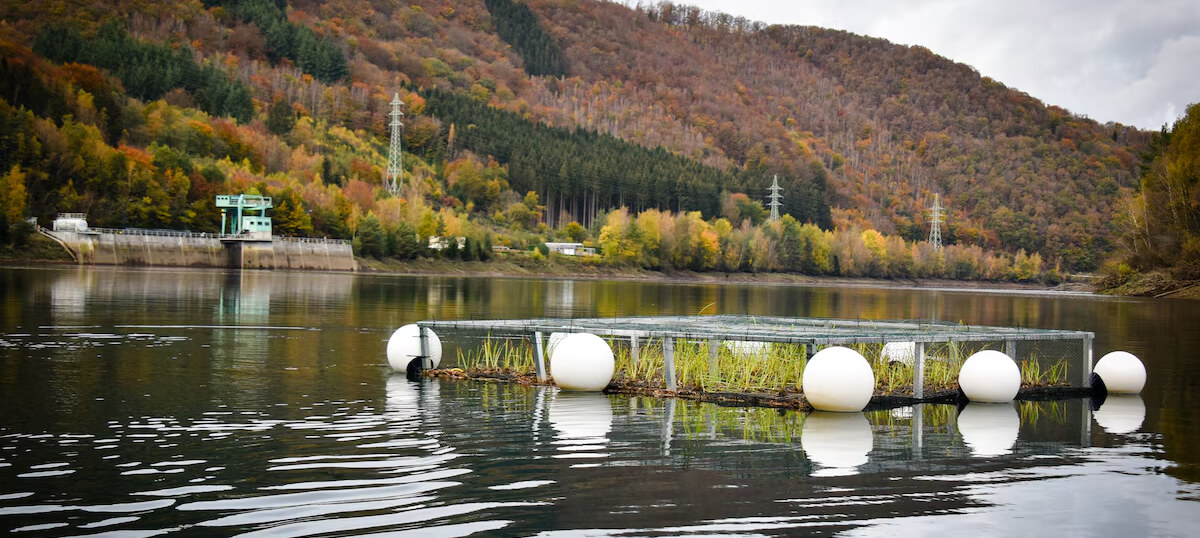
The Coo hydroelectric power plant is located in the Amblève Valley in Belgium. With an installed capacity of 1,080 MW, it plays a key role in regulating electricity in Belgium by storing excess energy and redistributing it during periods of high demand.
Two vegetated rafts, each 16 m², were installed in the lower basin of the power plant in collaboration with the Maison Wallonne de la Pêche and the fishing company Les Pêcheurs Réunis de Trois-Ponts. The objective is to create a suitable habitat for aquatic fauna, particularly by allowing fish to lay their eggs and feed there.
- How the rafts work:
- The rafts consist of honeycombed surfaces planted with reeds.
- The plant roots extend up to one meter underwater, providing fish with a safe place to lay their eggs, even when the water level fluctuates.
- Ecological benefits of rafts:
- Rafts help combat the risk of eggs laid on the banks drying out due to fluctuating water levels.
- They also serve as resting areas for amphibians and can attract birds such as the kingfisher.
For more information:
Preservation of native species in the Sossís Canal (Spain)
ENGIE is committed to the preservation and reintroduction of native species affected by hydrological infrastructure, particularly in the Noguera Pallaresa River basin in the province of Lleida, Spain, which is classified as a trout genetic reserve.
This annual initiative saved 1,567 Mediterranean trout, one rainbow trout, eight Atlantic trout, 914 redtail barbel, and three Iberian crayfish.
The fry and fish are being transferred to temporary aquatic habitats. The rescued species were released into neighboring rivers within the Noguera Pallaresa basin, where they can continue their life cycle in a suitable habitat.
The rescue took place after the Sossís Canal was regularly drained as part of maintenance work on the hydroelectric power plant, which was built in 1914 and is 6 kilometers long.
The operation lasted three days and was carried out by a team of specialized technicians and ENGIE employees; the initiative, supported by local associations and neighbors, also involved rural agents from the Catalan Forest Service.
For more information:
Fish continuity through river revitalization of the Fronde backwater (France)
In the fall of 2024, the Compagnie Nationale du Rhône (CNR) began a project to restore and revitalize a complex of river banks to bypass the Molottes weir, located in the heart of the Haut-Rhône National Nature Reserve (RNN). This operation, designed based on Nature-Based Solutions (NBS), involves restoring existing river ecosystems without the use of exogenous materials (such as concrete or steel). This project aims to create a 300m bypass arm of the Molottes weir, whose design is inspired by natural models. The latter follows the Fronde weir on its upstream section and is extended by a connecting arm connecting to the downstream section of the weir.
The expected benefits for biodiversity are numerous: rejuvenation of the Fronde backwater, better resilience of aquatic ecosystems in the face of climate change, habitat gains for fish fauna, increase in water resources for the alluvial forest via better water/groundwater exchanges, etc.
For more information:
Launch of ecological restoration work on the Rhône south of Lyon (France)
The CNR has begun major restoration work on the banks of the Rhône River south of Lyon. This work aims to restore water to the secondary branches of the river, known as “lônes”, and recreate wetlands conducive to biodiversity. It also dismantled the historic "Girardon" spurs, which hindered the sediment dynamics of this part of the Rhône. Costing €8.2 million, the restoration work undertaken by the CNR, with financial support from the Rhône Méditerranée Corse water agency, is expected to be completed in 2028. It will restore water to 5 kilometers of backwaters and secondary channels in the area. It will also create six islands and nearly 8 hectares of ponds and wetlands, reconnecting them to the Rhône and its alluvial aquifer.
This is the largest operation of this nature carried out by the CNR on the Rhône since the launch of its ecological restoration program in 2000. This program, one of the most ambitious in the world, has already increased flow rates along 120 kilometers of natural watercourse between the Swiss border and the Mediterranean and rehabilitated more than 77 backwaters, for an investment of nearly €100 million.
For more information:




